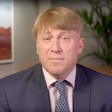
Introduction to Credit Analysis

Nick Beeson
35 years: Credit & banking
Credit analysis is the process of determining whether a counterparty will honour its obligations in a transaction. It involves balancing what is gained if they meet their obligation against how much is lost if they do not. To make these assessments, there are a plethora of factors to be taken into account. In this first video of the series, Nick specifically covers three accounts - The Balance Sheet, the Profit and Loss and Cashflow - as factors of a credit analysis.
Credit analysis is the process of determining whether a counterparty will honour its obligations in a transaction. It involves balancing what is gained if they meet their obligation against how much is lost if they do not. To make these assessments, there are a plethora of factors to be taken into account. In this first video of the series, Nick specifically covers three accounts - The Balance Sheet, the Profit and Loss and Cashflow - as factors of a credit analysis.
Subscribe to watch
Access this and all of the content on our platform by signing up for a 7-day free trial.

Introduction to Credit Analysis
8 mins 40 secs
Key learning objectives:
Define credit analysis
Pinpoint the basics of credit analysis
Identify the 3 measures of credit analysis and how each of them work
Overview:
In order to successfully judge whether or not a counterparty will honour its obligations in a transaction, we must obtain a picture of them utilising various information sources that we have available. This includes an analysis of company accounts, balance sheets, profit & loss and cash flows.
Subscribe to watch
Access this and all of the content on our platform by signing up for a 7-day free trial.
What is Credit Analysis?
This is essentially working out if we believe a counterparty will honour its obligations in a transaction with us or not. Then balancing what we make out of it if they do against what happens and how much we lose if they don’t. This ultimately determines if we should enter into a contract with them or not.
What are the basics of credit analysis?
- Who is borrowing?
- How much are they borrowing?
- How long will it be before I get it back?
- What's in it for me?
How is a company’s balance sheet used in analysis?
Balance Sheet - This is a snapshot in time of the assets and liabilities of the company, what it owns and what it owes. It must always balance. It is made up of the following 5 sections:
- Current Assets – those assets that can be and are intended to be turned into cash within 1 year
- Fixed Assets – those assets that are either used in the course of business that are not expected to be turned into cash at all, and all those assets that will turn into cash in >1 year (long term debtors)
- Current Liabilities – those liabilities that will have to be paid in cash within 1 year
- Long Term Liabilities – those obligations that don’t have to be paid within 1 year
- Equity – Made up of the issued share capital and any reserves such as Profit & Loss
How is a company’s profit & loss used in analysis?
Profit & Loss - This is the account of the trading performance of the company over a period of time, its incoming and its outgoings. It starts with revenues generated from trading and then deducts in order.
The cost of the goods sold to give the gross profit, the operating costs of the business to give the operating profit, the finance costs incurred in running the business to give pre-tax profit, the tax charged to give the post-tax profit and the dividends paid to give the retained profit.
How are cash flows used in the credit analysis?
This is a record of the activities of the company over a period of time – trading and non-trading – but specifically with respect to cash transactions. It starts with the cash generated from operations, then moves on to the cash used in investing activities and then the cash that arises from financing activities. This totals the change in cash during the period and is added to the opening cash.
Subscribe to watch
Access this and all of the content on our platform by signing up for a 7-day free trial.

Nick Beeson
There are no available Videos from "Nick Beeson"



























